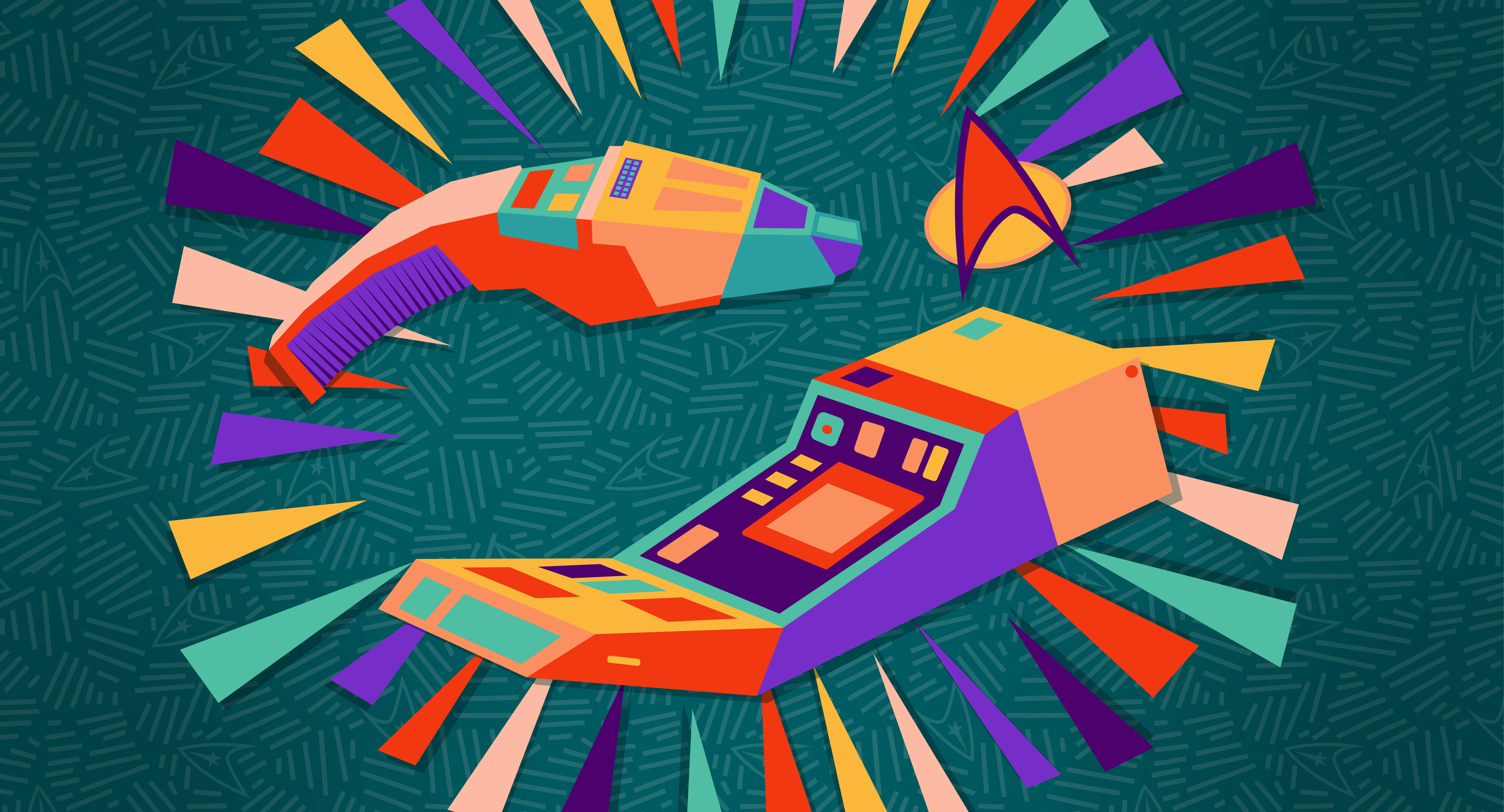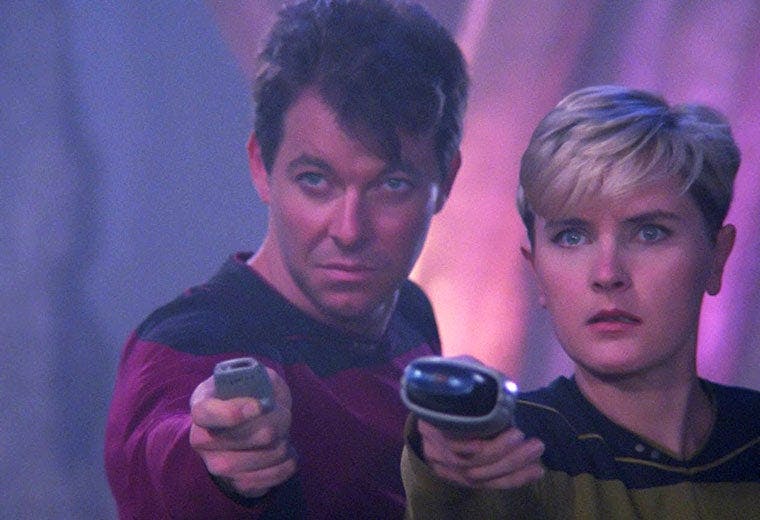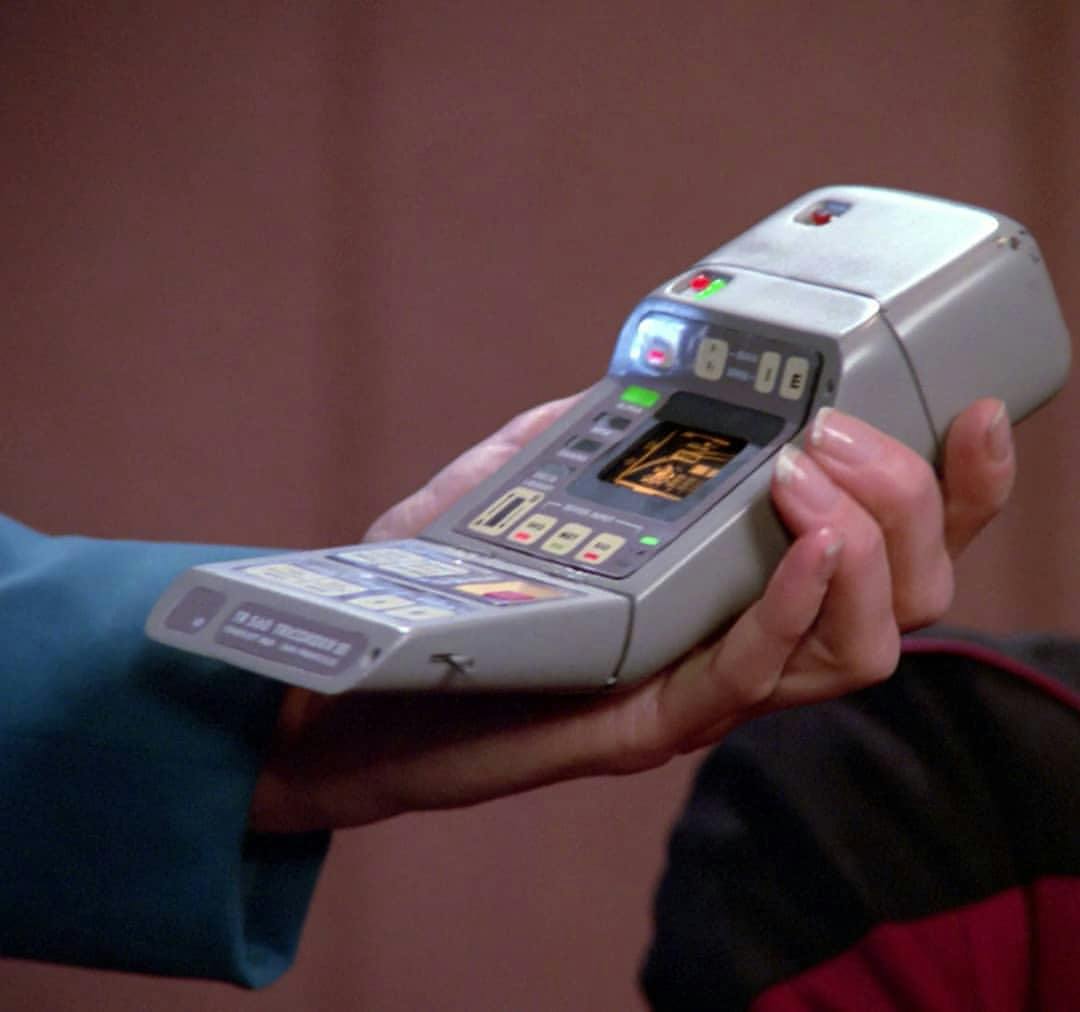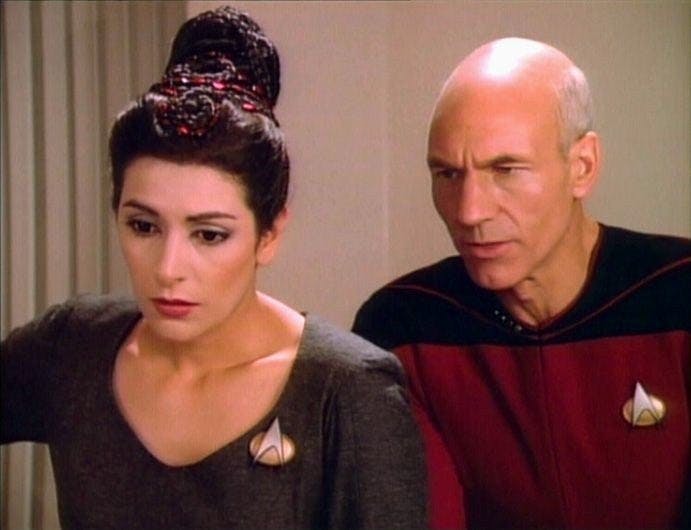Published Sep 28, 2021
Designing a New Era of Technology For Encounter at Farpoint
Andrew Probert and Herman Zimmerman talk designing the world of Star Trek: The Next Generation.

StarTrek.com
This article was originally published on September 26, 2019.
To commemorate the series premiere of Star Trek: The Next Generation which aired 32 years ago, we’re taking a look behind-the-scenes of “Encounter at Farpoint.”
Herman Zimmerman and Andrew Probert had a lot of work on their hands as the show’s production designer and consulting senior illustrator, respectively. In many regards, they were in charge of designing the look and mechanics of a brand-new era in Star Trek.
Entertainment Tonight visited their production office on the Paramount Studios backlot in April of 1987. Surrounded by various sketches and mock-ups, the two spoke at length about the aesthetic and practical details they’ve been working hard to instill within the new show. In the most concise terms, the goal was for everything to seem: familiar — but new.
“Basically, to make the fans feel comfortable with the show — and the fans are basically what's kept this thing alive for 20 years — we've tried to base everything we've done on the old show and how it would be,” Probert told ET. “It's like real life. When designers design a new aircraft or a new car, they don't just throw out everything they knew and start from scratch. They always extrapolate what they've learned and hopefully advance beyond that. And that's all we've done.”
NCC-1701-D

StarTrek.com
Amongst the several divisions of speculation brewing about the new series, details about the new Enterprise ship must have been some of the most sought after. To synchronize with Gene Roddenberry’s new vision of the future, the NCC-1701-D would need to incorporate more than just an expanded workforce.
“It's over twice as large as [The Original SeriesEnterprise,]” said Probert, who had also been one of the Enterprise designers for Star Trek: The Motion Picture. “Gene felt that with longer missions people will want to take their families aboard the ship and so we've made accommodations for that.”
“It's 2,108 feet. 50 million metric tons. The Enterprise occupies a space that's if we laid the floor plan over the Paramount lot, it would completely overshadow the lot,” Zimmerman told ET. He also noted that among the ship’s features would be living quarters, food processing plants, recreation spaces, and even a “magazine publishing company.”
The production stages for designing a 24th century Enterprise appeared to overall approach for how new Trek elements were being created.
“You start out with Gene Roddenberry's idea. We're really an extension of the original Star Trek series in the sense that this is the new generation. This is another 75 years into the future,” said Zimmerman. “We are all collectively using our imaginations all the time. All of us here in the art department are Star Trek fans or Star Trek aficionados.”
He added, “And the end of it usually is in Mr. Roddenberry's office where he says, “Yes, that's great” or “No, I think we should go another direction.”
TRANSPORTERS

StarTrek.com
“We still take people from planet to ship and back by disassembling their molecules and reassembling them in another place,” Zimmerman told ET. “That's a very strong idea that came from The Original Series and has continued through the features and we'll definitely be doing that, as well.”
He added, “Maybe it'll look a little more sparkling.”
PHASERS

StarTrek.com
Of the iconic weapons, Zimmerman explained, “Our weapons are, particularly, almost microminiaturized now in this century. So, you hardly recognize them as weapons. They certainly don't have triggers and they don't look like conventional weapons that you'd see in the 1980s certainly.”
TRICORDERS

StarTrek.com
“The tricorders are much slimmer. You can carry it on your person. You can just take it and flip it open. It's got a read out and monitor and sensing device. You can gain a lot of information and record a lot of devices through its use,” said Zimmerman.
COMMUNICATORS

StarTrek.com
Together, with Roddenberry and costume designer Bill Theiss (who also created TOS costumes), Probert told ET their discussions about a new Starfleet communicator were focused on its potential size. Eventually, they landed on the concept of devices that could be worn on the uniform where the Starfleet insignia was located on TOS costumes.
“One thing that they wanted to do was get away from something relatively that large in the future,” said Probert. “And anything smaller, you'd have to find a place to put it!”
Joe Bergren (he/him) is a media coordinator and contributing video producer for ET Live. His interests include "Star" related franchises and retro celebrity scandals, as well as niche subjects like his very cool dog. Find him on Twitter @JoeBergs.

